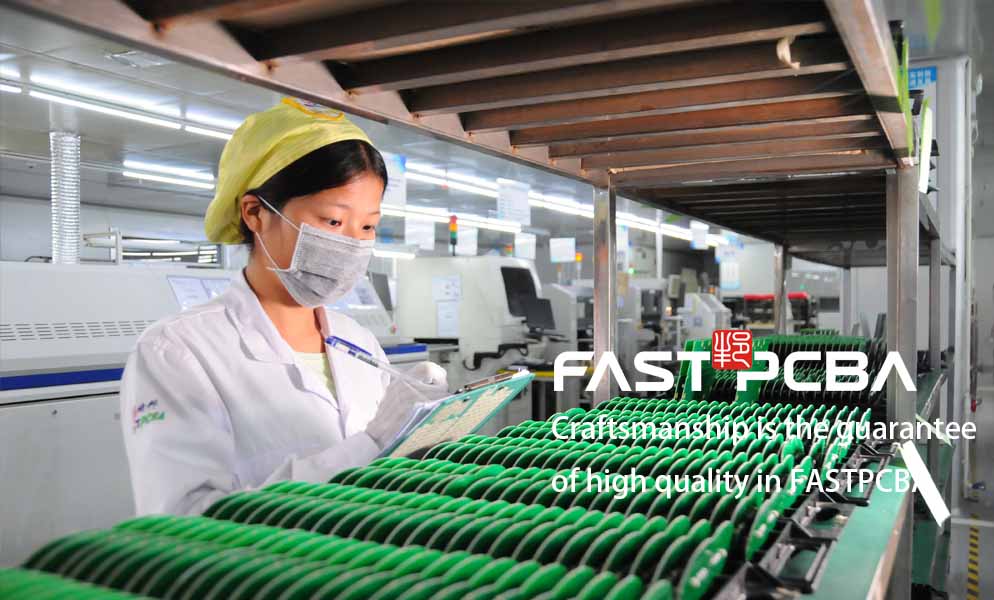About us
FASTPCBA Co.,Ltd
-
 Building 1, Senyang Electronic Technology Park, Guangming High-tech Park, Yutang Street, Guangming District, Shenzhen City.
Building 1, Senyang Electronic Technology Park, Guangming High-tech Park, Yutang Street, Guangming District, Shenzhen City.
-
 F:86-13418481618
F:86-13418481618
-
 [email protected]
[email protected]
 date:2019-11-11 15:08:43
date:2019-11-11 15:08:43
PCB manufacturing reflow soldering process requirements
1. Reflow soldering is a key process for PCB manufacturing SMT and must be carried out under controlled conditions. The process requirements for reflow soldering are as follows.

A. According to the temperature profile of the selected solder paste and the specific conditions of the surface-assembled board, combined with the welding theory, set the “ideal reflow soldering temperature curve” and periodically measure the “real-time temperature curve” to ensure the quality and process stability of the soldering. .
B. Welding according to the welding direction of the PCB design
C. During the welding process, the belt vibration is strictly prevented. When the production line is not equipped with a unloading device, pay attention to the plate at the exit of the placement machine to prevent the later board from falling on the first board and scratching the SMD pin.
D. The first piece of welding quality inspection must be carried out. The AOI is used for real-time monitoring or regular inspection of the welding quality during the batch production process.
2. Preparation before welding
Before soldering, check whether the power switch and UPS power switch are in the off position; familiar with the process requirements of PCB manufacturing products, the thickness, size, assembly density, components and other specific conditions of the selected solder paste and surface mount board, combined with the welding theory, set reasonable reflow soldering temperature curve; special cases (such as flexible boards) may also require the preparation of welding tooling (fixture).
3. Open the furnace, the steps to open the furnace are as follows:
A. Turn on the main power supply and exhaust fan power;
B. Turn on the main power of the reflow oven:
C. Turn on the UPS backup power supply;
Start the device according to the device operation rules. After the device completes the system self-test, it can be programmed or adjusted.
4. Set process parameters such as reflow temperature and speed
A. According to the temperature profile of the solder paste, the solder pastes of different alloy compositions have different melting points, even the same alloy composition. Due to the different composition of the flux, the activity and activation temperature are different. There are some differences in the temperature profiles of various solder pastes. Therefore, the process parameters such as temperature and speed of specific products should first meet the temperature curve provided by the PCB manufacturing factory. .
B. According to the density of the components mounted on the SMA, the size of the components, and the special requirements of the moisture sensitive components such as BGA. CSP, the quality of the solder joints is guaranteed without damaging the components.
C. According to the material, thickness of the PCB, whether it is a multi-layer board, size, setting process parameters
D. It should be set according to the specific conditions of the equipment, such as the length of the heating zone, the material of the heating source, the structure of the reflow furnace and the heat conduction mode.
E. According to the actual position of the temperature sensor to determine the set temperature of each temperature zone
F. It should be set according to the amount of exhaust air and measured regularly.
G. Ambient temperature also affects the furnace temperature, especially for reflow soldering furnaces with short heating temperature zone and narrow furnace width. The temperature protection is greatly affected by the ambient temperature. Therefore, convective wind should be avoided in the reflow soldering furnace inlet and outlet. .
 Building 1, Senyang Electronic Technology Park, Guangming High-tech Park, Yutang Street, Guangming District, Shenzhen City.
Building 1, Senyang Electronic Technology Park, Guangming High-tech Park, Yutang Street, Guangming District, Shenzhen City.
 F:86-13418481618
F:86-13418481618
 [email protected]
[email protected]